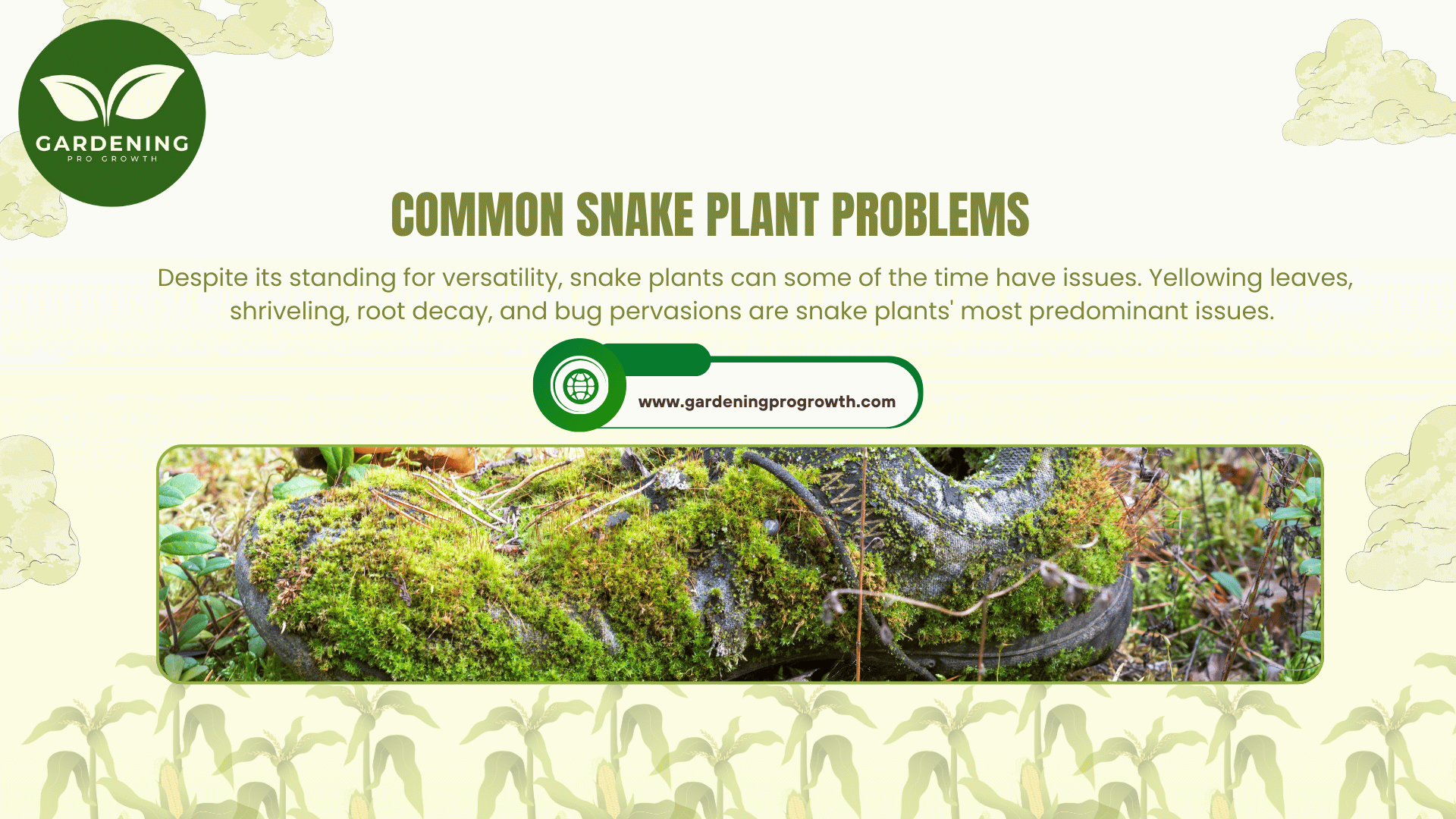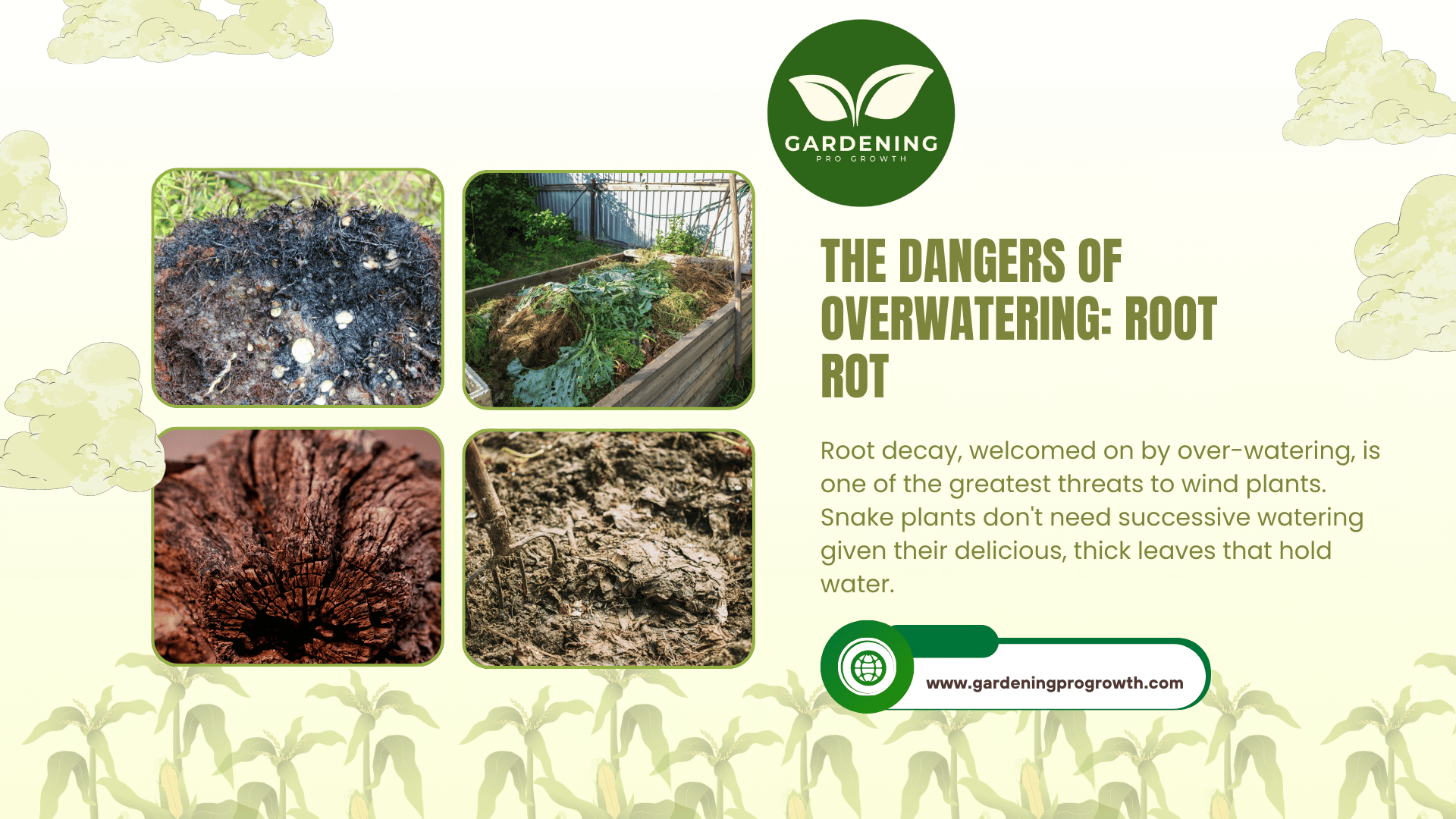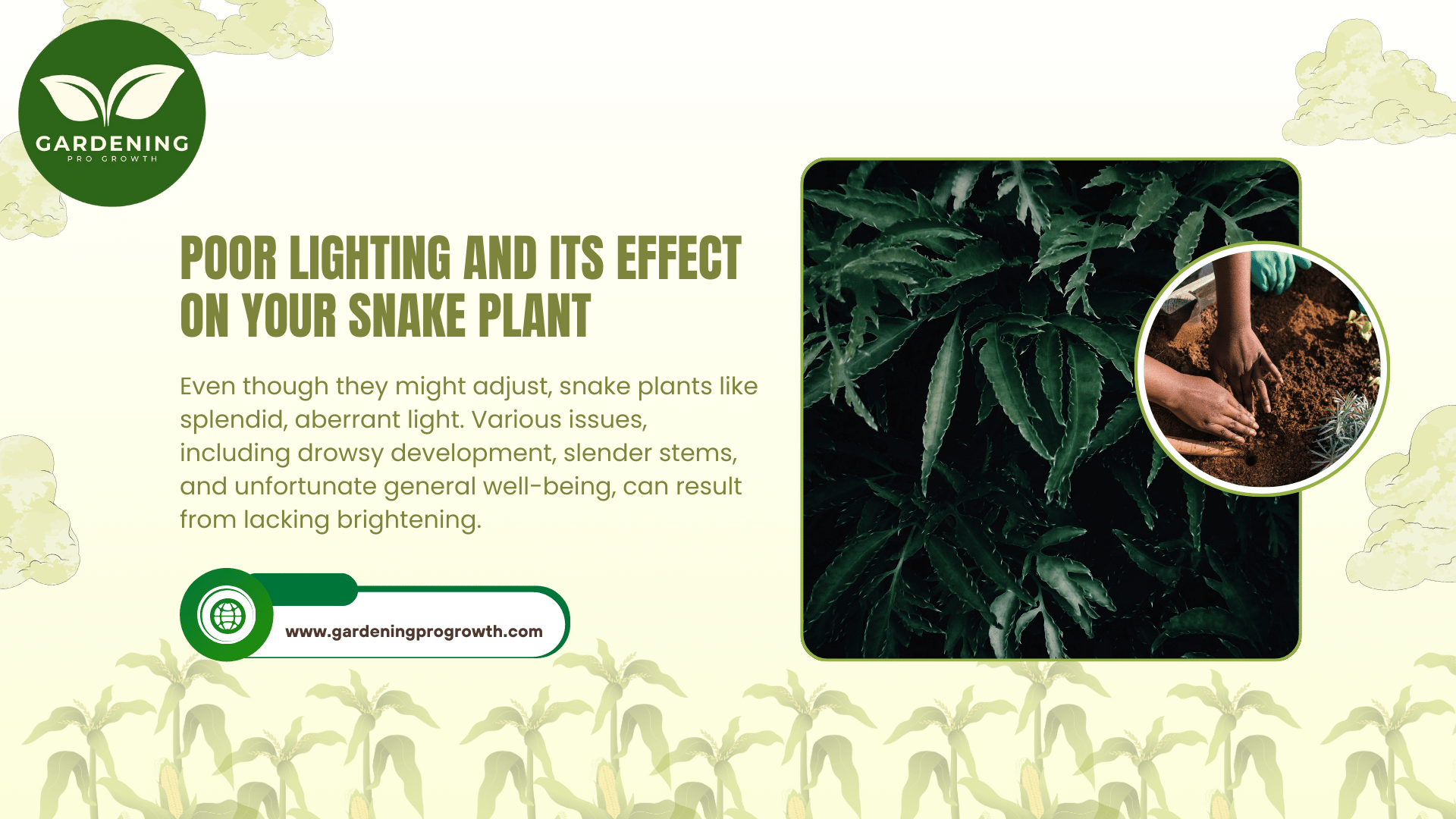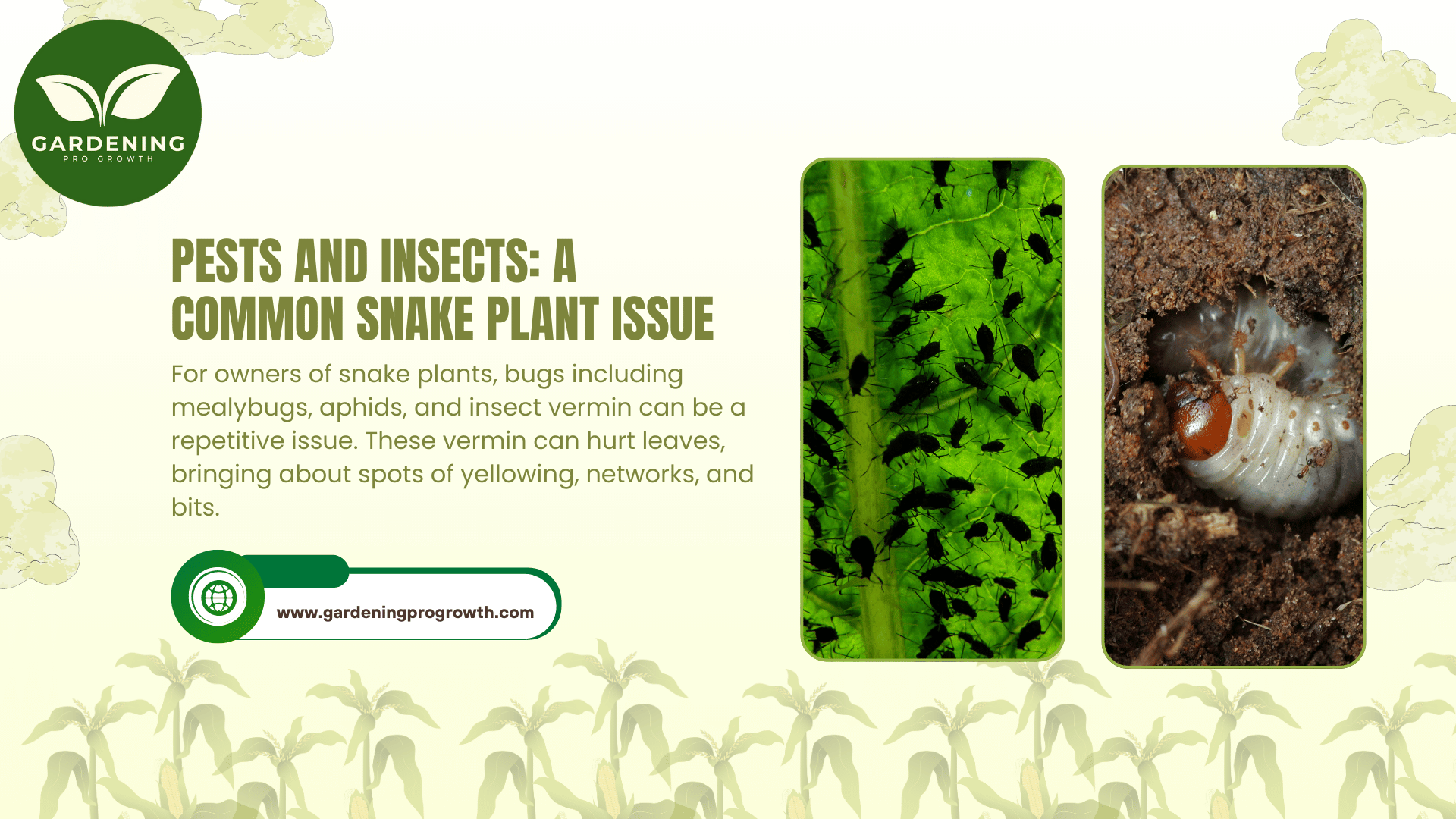Both the easiest and most difficult houseplants to maintain are snake plants or succulents. They are a popular option for indoor areas since they may grow in a variety of settings. Be that as it may, even the strongest plants could experience troubles. This article by Gardening Pro Growth will explore the snake plant problems, highlighting typical disadvantages, conceivable unfavorable impacts, and ways of keeping up with the well-being and outcome of your houseplants.
Common Snake Plant Problems

Despite its standing for versatility, snake plants can some of the time have issues. Yellowing leaves, shriveling, root decay, and bug pervasions are snake plants’ most predominant issues. These issues are as often as possible connected with ecological components including stickiness, light, and watering.
Causes of Common Snake Plant Problems
| Overwatering | Since snake plants can endure dry spells, they needn’t bother to be watered much of the time. Root decay and other medical issues could come about because of overwatering. |
| Improper Lighting | Snake plants require roundabout light, and deficient lighting can make them slender and weak. |
| Pests | Bug parasites, aphids, and mealybugs are normal nuisances that mischief snake plants, harming the leaves and hindering improvement. |
Solutions for Common Problems
Giving the plant the right consideration —, such as watering just when the dirt is dry, ensuring it gets sufficient light, and regularly looking at it for pests — is essential to preventing these issues.
The Dangers of Overwatering: Root Rot

Root decay, welcomed on by over-watering, is one of the greatest threats to wind plants. Snake plants don’t need successive watering given their delicious, thick leaves that hold water. An excess of moisture in the dirt can make the roots decay, which will ultimately exhaust the supplements and kill the plant.
What is wrong with my snake plant?
Overwatering and root decay are obvious if you notice yellowing foliage, soft or burned roots, or an undesirable scent exuding from the dirt.
How to Fix Root Rot
- In the middle between waterings, let the plant dry out.
- Repot the plant in new, dry soil with satisfactory waste in the wake of eliminating it from the holder and manage the spoiled roots if the root decay is extreme.
Poor Lighting and Its Effect on Your Snake Plant

Even though they might adjust, snake plants like splendid, aberrant light. Various issues, including drowsy development, slender stems, and unfortunate general well-being, can result from lacking brightening.
What is wrong with my snake plant?
It might demonstrate lacking light if your snake plant starts to grow and lose its upstanding structure. Low light levels may also make the plant more powerless against bug invasions.
Solutions for Poor Lighting
Keep away from direct daylight since it could consume the leaves of your snake plant; all things considered, place it near a window that gets roundabout daylight. Think about adding counterfeit develop lights on if you need more regular light.
Pests and Insects: A Common Snake Plant Issue

For owners of snake plants, bugs including mealybugs, aphids, and insect vermin can be a repetitive issue. These vermin can hurt leaves, bringing about spots of yellowing, networks, and bits.
How to Identify and Treat Pest Infestations
- Search for networks, small, stained fixes, or indications of bugs on the underside of the leaves.
- Treat the pervasion with neem oil or a gentle insecticidal cleanser. To stay away from aggregation, wipe the leaves down frequently.
- By rehearsing great neatness and consistently checking the plant, snake plant issues and downsides inside welcomed on by vermin might be diminished.
Snake Plant Leaf Problems
Generally firm and straight, snake plant leaves are an admonition sign that something is wrong when they start to give indications of yellowing, twisting, or in any event, bringing down.
Why are my snake plant leaves falling over?
The following are a few potential motivations behind why leaves fall:
|
Overwatering |
A lot of water can weaken a plant by spoiling its foundations. |
|
Environmental Stress |
The leaves might get weakened and overturn because of sudden temperature variances, drafts, or low mugginess. |
| Old Age |
It’s typical for more established passes to start to hang or fall. |
How to Solve Leaf Problems
- Ensure you water your plants appropriately.
- Keep a consistent climate for the plant, with ordinary dampness and temperature.
Is It Bad to Keep a Snake Plant at Home?
Despite its far-reaching use, many individuals are uncertain about the well-being of keeping a snake plant at home. Although the plant is a fabulous expansion to inside regions because of its air-filtering properties, there are a few potential downsides.
What are the side effects of snake plants?
Snake plants are to some degree risky whenever consumed by pets or small kids, regardless of their capacity to channel the air. Whenever ingested, the plant’s saponins might initiate queasiness, retching, or looseness of the bowels.
When to Avoid a Snake Plant
It’s essential to keep the snake plant far away from young kids or canines who could chew on plants or to choose a non-harmful substitute.
The Myth About Snake Plants: Debunking Misconceptions
New plant owners might be misdirected by various lies about snake plants.
What is the myth about snake plants?
- Snake plants are completely low-maintenance: Despite the fact that they are versatile, snake establishes still require standard consideration. Issues might emerge from bugs, insufficient light, and over-the-top watering.
- Snake plants never need repotting: Their slow development, snake establishes in any case should be repotted like clockwork to give their foundations sufficient space to fan out.
What is the fantasy about snake plants?
Plant owners can set sensible assumptions for upkeep and care by dissipating these deceptions.
10 Snake Plant Problems and Disadvantages Each Proprietor Should Be Aware
Coming up next is a careful rundown of ten regular snake plant common problems alongside fixes:
- Root Rot – Brought about by overwatering.
Solution: Ensure drainage is satisfactory and shun overwatering.
- Yellowing Leaves – Frequently a consequence of overwatering or unfortunate lighting.
Solution: Move the plant to a more brilliant area and check the water levels.
- Pest Infestations – Normal pests like aphids and bug parasites.
Solution: Apply neem oil or insecticidal cleanser.
- Falling Leaves – This can be brought about by overwatering, natural pressure, or age.
Solution: Keep on giving ordinary consideration.
- Leggy Growth– Brought about by lacking light.
Solution: The response is to move the plant to an all the more light-filled region.
- Brown Leaf Tips – Brought about by dry air or underwatering.
Solution: Make a point to hydrate appropriately and raise the moistness.
- Stunted Growth – This can happen because of supplement lacks or packed roots.
Solution: Repot in new soil as an answer.
- Leaf Curling – Brought about by underwatering or bothers.
Solution: Check for bugs and give more water.
- Brown Spots – An indication of parasitic or bacterial diseases.
Solution: Increase wind stream and eliminate sullied leaves.
What is wrong with my snake plant?
Most snake plant care issues might be found and settled with the guide of this rundown.
Disadvantages of Indoor Plants in General
Snake plants and other indoor plants enjoy specific benefits, like bettering the nature of the air, however they additionally present specific hardships.
|
Pest Infestations |
Indoor plants can draw in bugs that twist in controlled environmental elements. |
|
Watering Challenges |
An extreme or too little watering can cause various issues. |
| Space Requirements |
Plants might be moved or repotted when they grow out of their ongoing position. |
How to Revive a Struggling Snake Plant
There is potential for a revival if your snake plant is experiencing issues. Here is an itemized guide:
- Inspect for Root Rot: Remove the plant from its holder and remove any spoiling roots.
- Repot in Fresh Soil: Ensure the holder is spotless and the dirt depletes appropriately.
- Adjust Watering: Try to water the plant just when the dirt is totally dry.
- Provide Adequate Light: Position the plant in a space that gets roundabout daylight.
- Increase Humidity: Whenever required, use a humidifier to raise the moistness levels surrounding the plant.
Conclusion
You can keep a snake plant healthy and developing by monitoring and dealing with its issues and disadvantages. You can keep up with the best conceivable appearance for your snake plant by distinguishing the side effects early and using fitting cures. This article gives you the data you want to appropriately analyze and focus on your plant, whether or not you’re enduring pests, root decay, or leaf issues.
To study plant care, check out the Avocado Tree Leaves Turning Brown, Varieties of Tall Succulents and Cacti, Varieties of Fast-Growing Indoor Plants, Why My Rubber Tree Leaves Curling, how often to water a snake plant if you’re also keen on different sorts of plants!
FAQs
What causes snake plant leaves to turn yellow?
Pest invasions, insufficient light, and unreasonable watering are normal reasons for yellowing leaves. To fix the issue, change the lighting and watering and search for bugs.
Is it harmful to keep a snake plant indoors?
Snake plants are ok for indoor use, yet whenever consumed by young people or pets, they can be toxic and cause nausea or vomiting.
How do I prevent root rot in my snake plant?
To prevent inordinate dampness development, ensure the pot has sufficient waste and prevent it from overwatering.
If you want to learn more about House plants, check the following articles:
Snake Plant Turning Yellow: Causes and Solutions
How Much Light Does a Snake Plant Need? Care Tips
Greetings from Rickey Casey at Gardening Pro Growth, and your all-inclusive resource for anything gardening related. Rickey Casey has been devotedly immersed in cultivating and planting for the past five years. Having gone through numerous hours keeping attention on the plants and seeing them blossom, I came to comprehend the extraordinary joy and satisfaction that come from having a thriving green region. With the launch of this site, my goal is to help you succeed in your planting attempts by imparting the mastery, guidance, and bits of knowledge I’ve gathered throughout the long term.


